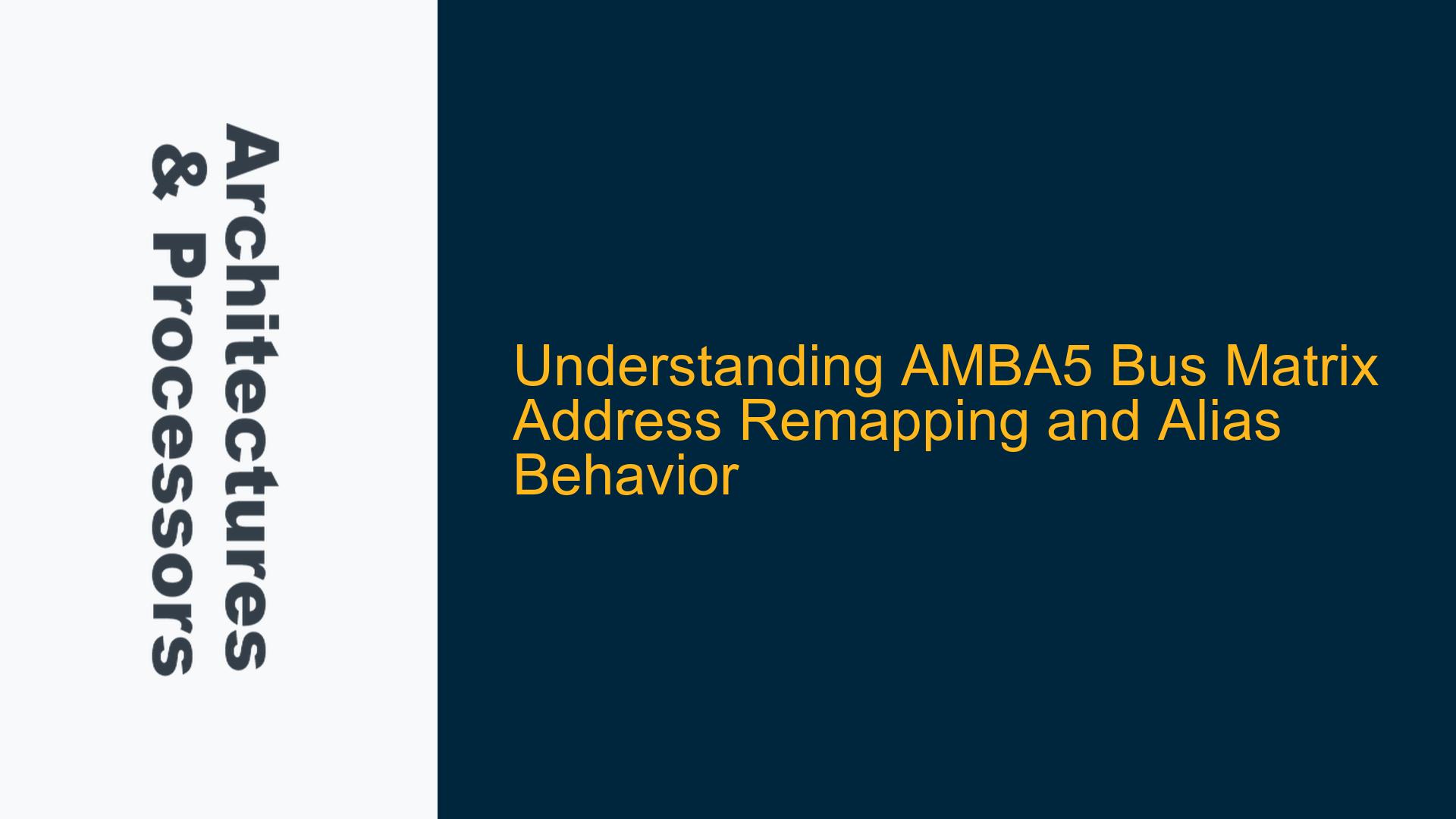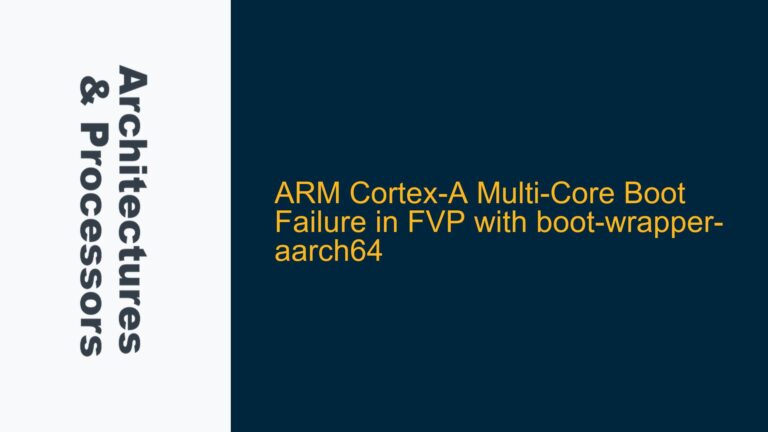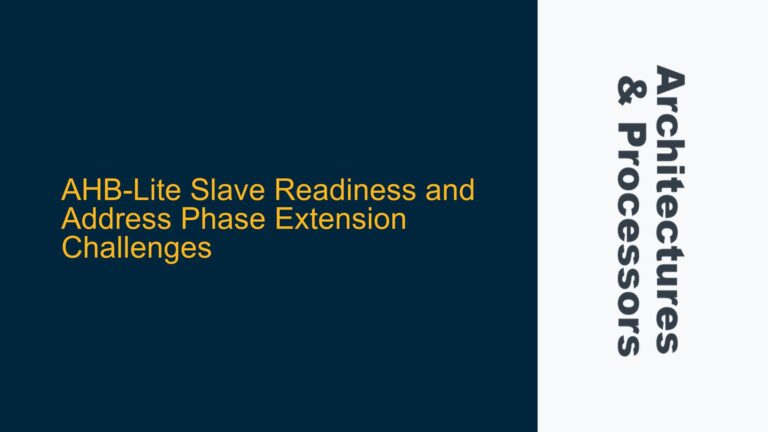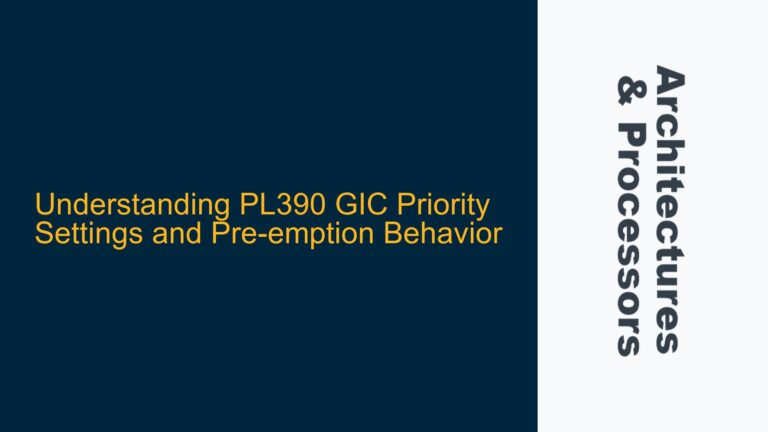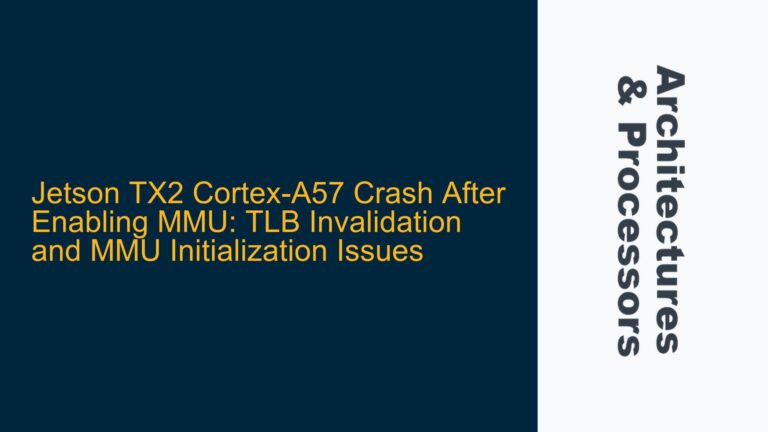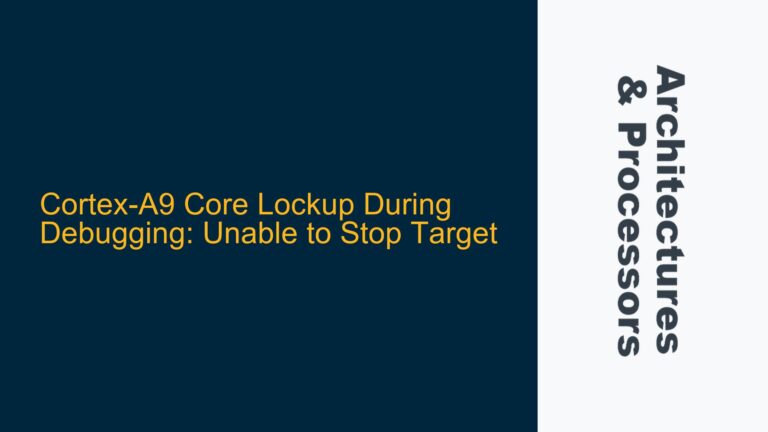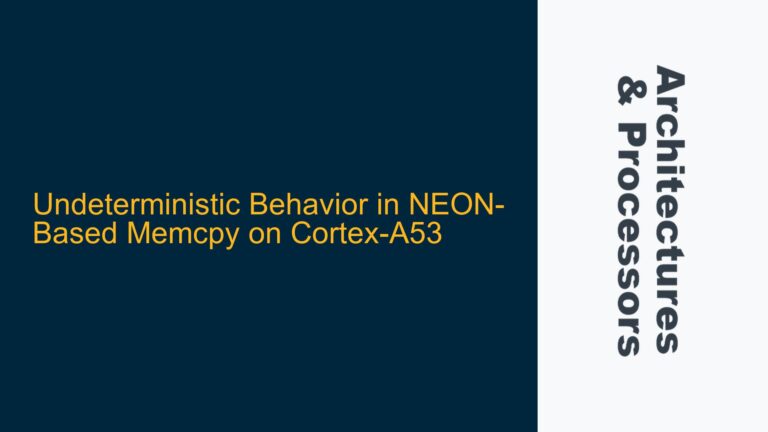AMBA5 Bus Matrix Address Remapping and Alias Behavior in SIE-200
The AMBA5 Bus Matrix, particularly in the context of the ARM SIE-200 IP, introduces a sophisticated mechanism for address remapping and aliasing, which can be both powerful and complex. This post delves into the intricacies of how address remapping and aliasing work within the Bus Matrix, focusing on the SIE-200 implementation. We will explore the behavior of the REMAP signal, the implications of address aliasing, and how these features can be leveraged in system design.
REMAP Signal and Address Aliasing in SIE-200 Bus Matrix
The REMAP signal in the AMBA5 Bus Matrix is a critical feature that allows for dynamic reconfiguration of the address map at runtime. This signal can be set to either "move" or "alias," each serving a distinct purpose. When REMAP is set to "alias," it creates multiple address ranges that map to the same physical memory location. This is particularly useful in scenarios where multiple hosts need to access the same memory region but through different address ranges.
In the SIE-200 Bus Matrix, the REMAP signal is used to configure the address decoders for each input port. These decoders examine the incoming HADDR value and route the transfer to the appropriate output port. The REMAP signal can alter this routing dynamically, either by moving the original address space to a new location (REMAP="move") or by creating additional address ranges that map to the same physical memory (REMAP="alias").
For instance, consider the scenario where REMAP[0]=1. In this case, the address 0x7000_000C for Host 1 and 0x0000_000C for Host 2 would both map to the same physical memory location. This is because the REMAP signal has created an alias, allowing both addresses to access the same underlying memory. This behavior is consistent with the "alias" functionality, where multiple address ranges are mapped to a single physical memory region.
However, the behavior of the REMAP signal can vary depending on the specific configuration of the Bus Matrix and the external components connected to it. For example, if the external memory or device connected to the Bus Matrix interprets the full 32-bit HADDR value, the multiple address ranges created by the REMAP signal could access different regions of the external device. This flexibility allows designers to tailor the address mapping to their specific needs, whether that involves creating multiple aliases to the same memory or accessing different regions of a larger memory space.
Implications of Address Remapping on Memory Access and System Design
The ability to remap addresses at runtime introduces several considerations for system design, particularly in terms of memory access and address decoding. When REMAP is set to "alias," the Bus Matrix creates multiple address ranges that map to the same physical memory. This can be beneficial in systems where multiple processors or peripherals need to access the same memory region but through different address ranges.
However, this also introduces complexity in terms of address decoding and memory management. The system designer must ensure that the address decoders are correctly configured to handle the remapped addresses and that the external memory or device can correctly interpret the full 32-bit HADDR value. This is particularly important when the REMAP signal is used to access different regions of a larger memory space, as the external device must be able to distinguish between the different address ranges.
In the SIE-200 Bus Matrix, the REMAP signal can be used to create multiple address ranges that map to the same physical memory, but it can also be used to access different regions of a larger memory space. This flexibility allows designers to optimize memory access and address decoding for their specific application, but it also requires careful consideration of the system’s memory architecture and the behavior of the external components.
For example, consider the scenario where REMAP[0]=1 and the address range 0x7000_0000 to 0x8fff_ffff is remapped to 0x0000_0000 to 0x0fff_ffff. In this case, the lower half of the remapped address range (0x7000_0000 to 0x7fff_ffff) would map to the same physical memory as the original address range (0x0000_0000 to 0x0fff_ffff). However, the upper half of the remapped address range (0x8000_0000 to 0x8fff_ffff) does not have an alias, meaning that it would not map to the same physical memory as the original address range.
This behavior highlights the importance of understanding the specific configuration of the Bus Matrix and the external components when designing a system that uses address remapping. The system designer must ensure that the address decoders are correctly configured to handle the remapped addresses and that the external memory or device can correctly interpret the full 32-bit HADDR value.
Troubleshooting and Optimizing Address Remapping in AMBA5 Bus Matrix
When working with the AMBA5 Bus Matrix, particularly in the context of the SIE-200 IP, it is essential to understand the behavior of the REMAP signal and how it affects address mapping and memory access. This section provides a detailed guide on troubleshooting and optimizing address remapping in the Bus Matrix, focusing on common issues and best practices.
1. Verifying Address Decoder Configuration
The first step in troubleshooting address remapping issues is to verify the configuration of the address decoders in the Bus Matrix. The address decoders are responsible for routing incoming transfers to the appropriate output port based on the HADDR value. When REMAP is set to "alias," the address decoders must be configured to handle multiple address ranges that map to the same physical memory.
To verify the address decoder configuration, review the address map for each input port and ensure that the REMAP signal is correctly configured to create the desired address ranges. This includes checking that the REMAP signal is set to "alias" for the appropriate address ranges and that the address decoders are correctly routing transfers to the intended output port.
2. Ensuring Correct Interpretation of HADDR by External Components
Another critical aspect of troubleshooting address remapping issues is ensuring that the external memory or device connected to the Bus Matrix correctly interprets the full 32-bit HADDR value. When REMAP is set to "alias," the multiple address ranges created by the Bus Matrix may access different regions of the external memory or device, depending on how the HADDR value is interpreted.
To ensure correct interpretation of the HADDR value, review the documentation for the external memory or device and verify that it can handle the full 32-bit address space. This includes checking that the external device can distinguish between the different address ranges created by the REMAP signal and that it correctly accesses the intended memory regions.
3. Optimizing Address Remapping for System Performance
In addition to troubleshooting, optimizing address remapping can improve system performance and efficiency. This involves carefully configuring the REMAP signal to create the most efficient address ranges for the specific application. For example, if multiple processors or peripherals need to access the same memory region, setting REMAP to "alias" can reduce contention and improve access times.
To optimize address remapping, consider the following best practices:
- Minimize Address Range Overlap: When creating multiple address ranges with REMAP="alias," ensure that the address ranges do not overlap unless necessary. Overlapping address ranges can lead to contention and reduced performance.
- Use REMAP="move" for Dynamic Reconfiguration: If the system requires dynamic reconfiguration of the address map, consider using REMAP="move" to shift the address space to a new location. This can be useful in systems where the memory layout needs to change at runtime.
- Leverage REMAP="alias" for Shared Memory Access: When multiple processors or peripherals need to access the same memory region, use REMAP="alias" to create multiple address ranges that map to the same physical memory. This can reduce contention and improve access times.
4. Debugging Common Issues with Address Remapping
When debugging issues with address remapping, it is essential to consider the following common problems:
- Incorrect REMAP Signal Configuration: Ensure that the REMAP signal is correctly configured for the intended address ranges. Incorrect configuration can lead to unexpected behavior, such as accessing the wrong memory region or failing to access the intended memory.
- External Device Address Interpretation: Verify that the external memory or device correctly interprets the full 32-bit HADDR value. Incorrect interpretation can lead to accessing the wrong memory region or failing to access the intended memory.
- Address Decoder Routing Errors: Check that the address decoders are correctly routing transfers to the intended output port. Incorrect routing can lead to accessing the wrong memory region or failing to access the intended memory.
By following these troubleshooting and optimization steps, system designers can effectively address common issues with address remapping in the AMBA5 Bus Matrix and optimize system performance. Understanding the behavior of the REMAP signal and how it affects address mapping and memory access is critical to designing efficient and reliable systems with the SIE-200 IP.
